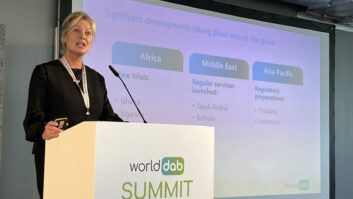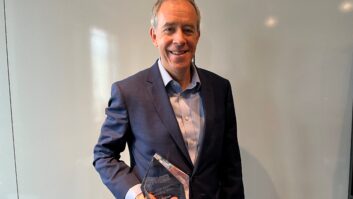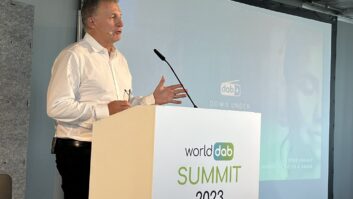As WorldDAB gets set to begin its 2015 General Assembly, which takes place Nov. 3–4 in London, Radio World spoke to Patrick Hannon, president of WorldDAB and vice president corporate development at Frontier Silicon, about the state of DAB around the world, the technology’s progress and what observers can expect in the coming months.
Radio World: Can you briefly outline key DAB progress that has taken place since your last General Assembly?
Patrick Hannon: The most eye-catching development of the last year is Norway becoming the first country in the world to set a firm date (2017) for Digital Switchover. Switzerland is next to follow with plans for switchover in 2020-24.
The second major development is the commitment by Germany to DAB+. In November last year, the ARD confirmed its long term vision for digital radio — and in April the Ministry of Transport and Digital Infrastructure (BMVI) announced the creation of a Digital Radio Board to develop plans for a digital future. In parallel, the Netherlands, which launched in 2013, is seeing the fastest ever adoption of DAB+.
The third major development has been sustained progress in the automotive sector. In the United Kingdom, over 70 percent of new cars are now fitted with DAB as standard (up from 10 percent at the beginning of 2011). Similar patterns of growth are being seen in Norway and Switzerland.
RW: What major problems or challenges are you expecting to discuss or try to overcome in the next year?

Hannon: There are three key themes to this year’s General Assembly:
1. Accelerating the international development of DAB
2. Communicating the benefits of DAB for private (commercial) broadcasters
3. Making further progress in the automotive sector
The key focus is on international developments. DAB is established in seven European markets (U.K., Norway, Denmark, Switzerland, Germany, Netherlands and Italy) — and in Australia. Our priority now is to extend this coverage into new European markets (France, Belgium, and Poland have already started — Austria, Slovenia and the Czech Republic are next in line). In the rest of the world, our priority markets include Turkey, Tunisia, the Gulf States, South Africa, Thailand, Malaysia and Indonesia.
For private broadcasters, as markets mature, the benefits of digital radio become increasingly evident. New digital-only services, brand extensions and pop-up stations are attracting audience and creating new revenue opportunities. Speakers from Australia, Italy and the U.K. will be sharing their experiences and vision.
For the automotive sector, we (collectively) need to communicate that DAB is the future platform for radio. The seven established markets in Europe account for 60 percent of new car sales across the continent — and more countries are set to follow. It is essential that car manufacturers understand both the political commitment behind this process and the benefits which DAB brings to motorists — i.e. greater choice, better quality reception and the enhanced free-to-air traffic information services.
RW: What developments do you expect (or would you like to see) to take place in the near future?
Hannon: In Europe, we expect:
- • Norway to make good progress toward digital switchover — providing a template for those who follow
• Germany to announce details of its roadmap and funding plans for DAB+ ·France to announce plans for rollout of digital radio into more cities — and markets in Central and Eastern Europe to take the next steps forward
• The U.K. to make further progress toward the coverage and audience targets required before any DSO decisions can be taken
• The European Commission to acknowledge digital terrestrial radio as part of its Digital Single Market Strategy
In the Rest of the World, we expect further progress in Australia — and we hope to see concrete developments in the next wave of markets (listed above).
As DAB develops internationally, economies of scale are achieved and receiver prices are falling. DAB is ready to be a mass-market proposition on a worldwide scale.












